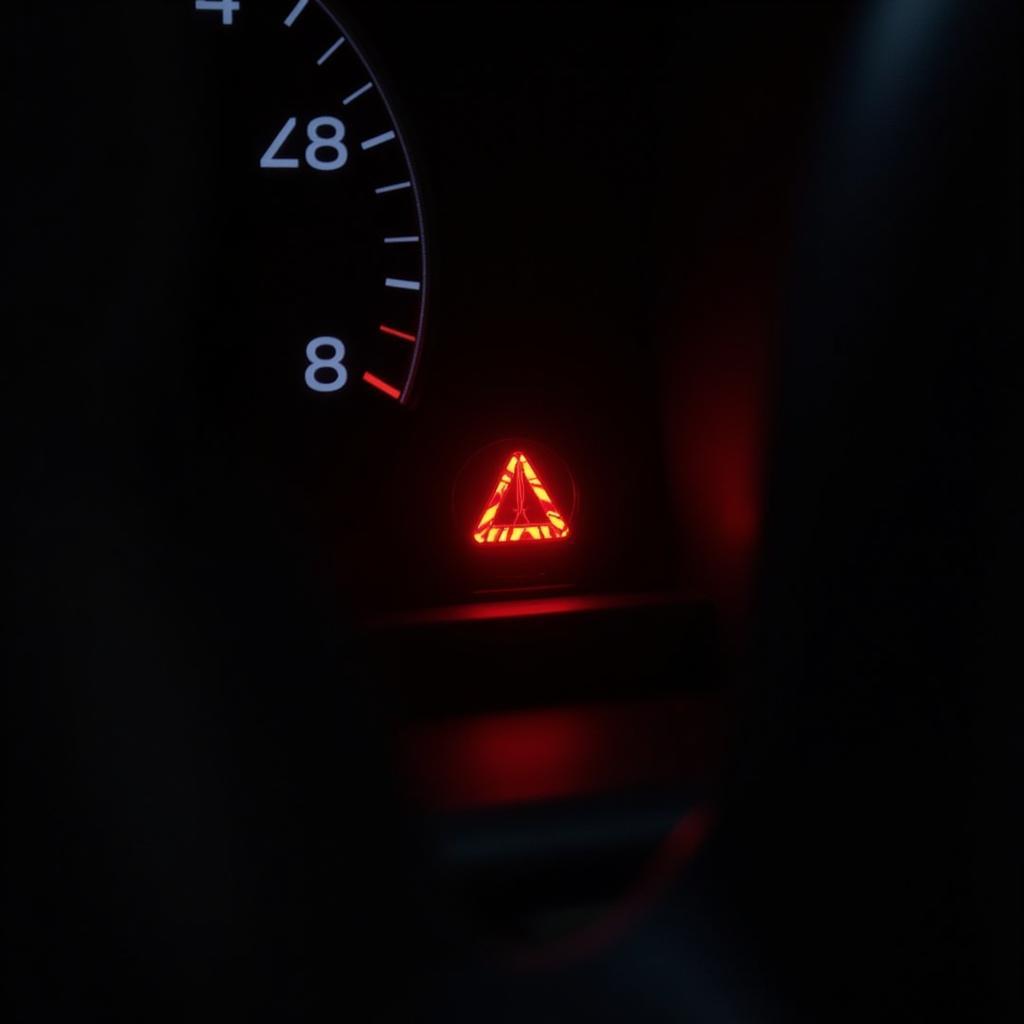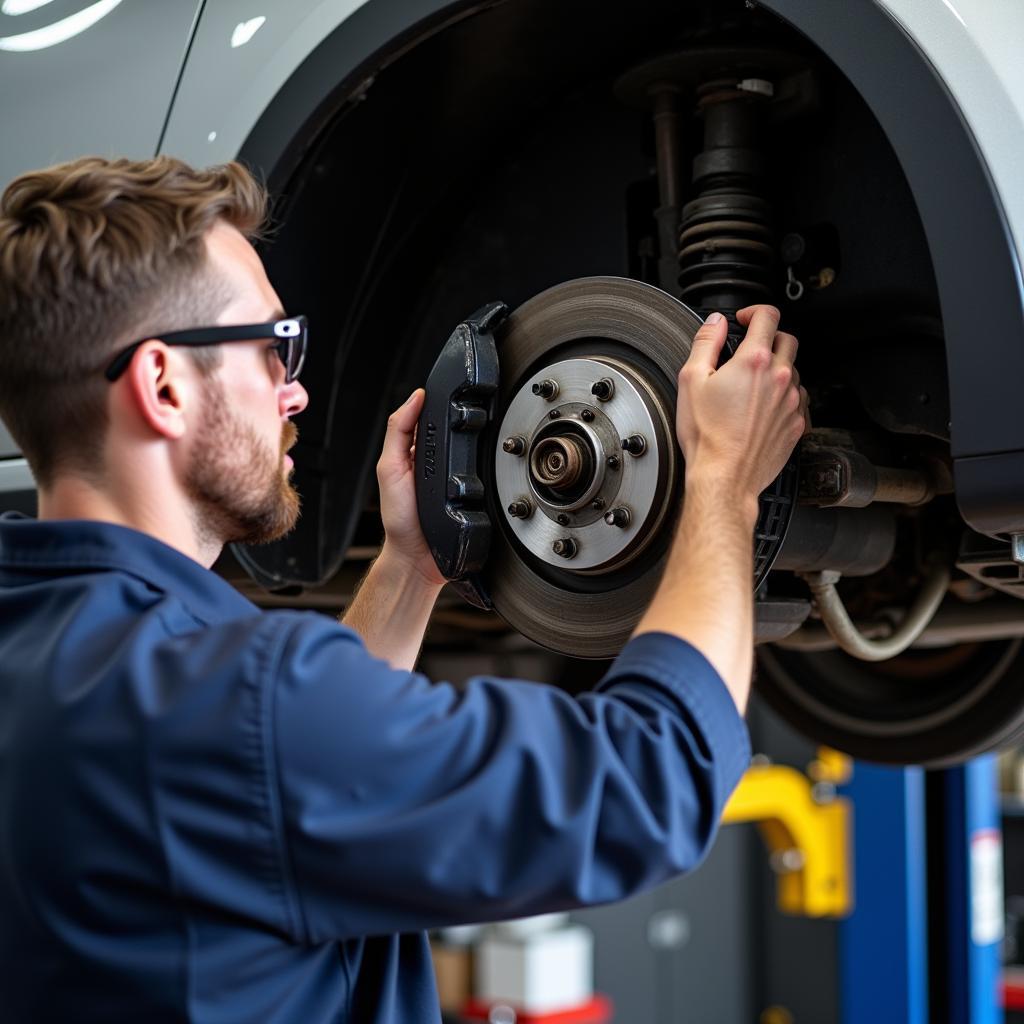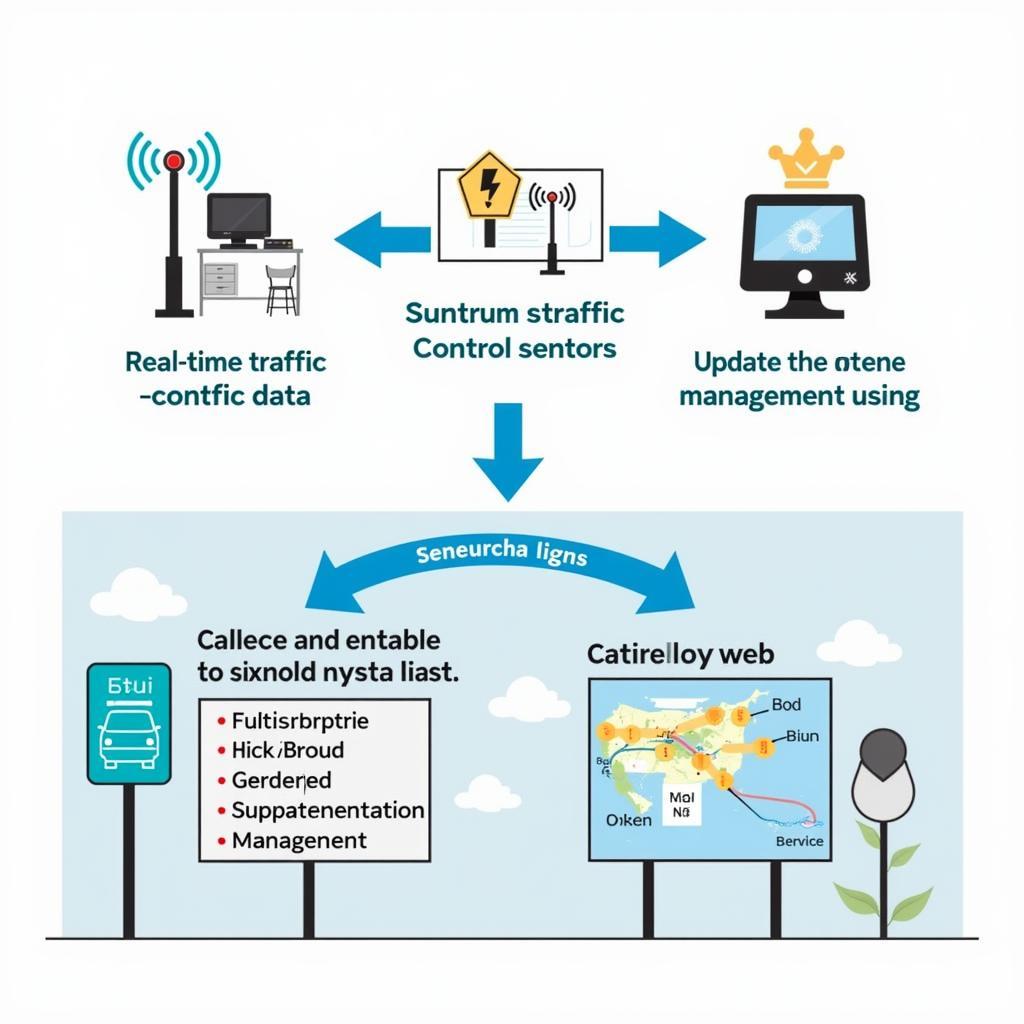The brake warning light, a universal symbol on your dashboard, can be a cause for concern for any driver. Seeing this light doesn’t automatically mean you need to slam on the brakes in a panic, but it does require immediate attention. This article will break down the meaning of this crucial warning indicator, the potential issues it’s flagging, and the steps you should take to ensure your safety on the road.
What Does the Brake Warning Light Mean?
 Brake Warning Light on Dashboard
Brake Warning Light on Dashboard
The brake warning light, typically displayed as a bright red circle with an exclamation mark (!) or the word “BRAKE” in the center, indicates a problem within your vehicle’s braking system. While the specific cause can vary, the presence of this light means your car’s braking system is not functioning at its optimal level.
Common Reasons Your Brake Warning Light is On
Several factors can trigger the illumination of the brake warning light. Here are some of the most common reasons:
- Low Brake Fluid Level: One of the most common culprits is a low brake fluid level. Your braking system relies on hydraulic pressure to function effectively, and brake fluid is the lifeblood of this system. A leak anywhere in the system can cause the fluid level to drop, triggering the warning light.
- Worn Brake Pads: Brake pads are designed to wear down over time as you use your brakes. When they reach a certain level of wear, a sensor within the brake pad itself can trigger the warning light, signaling it’s time for a replacement.
- Faulty Brake Caliper: The brake caliper houses the pistons that push the brake pads against the rotors, creating the friction needed to stop. A sticking or seized caliper can lead to uneven braking and potentially activate the brake warning light.
- ABS Issue: Many modern vehicles come equipped with an Anti-lock Braking System (ABS). While the brake warning light itself might not directly indicate an ABS problem, some cars use the same warning light for both systems. If your ABS light is also illuminated, or if you notice unusual behavior from the ABS system, such as pulsing in the brake pedal during normal braking, it’s crucial to have it checked.
- Parking Brake Engaged: While it may seem obvious, sometimes the simplest explanation is the most likely one. If you’ve accidentally left your parking brake partially engaged, it can trigger the warning light.
What to Do When Your Brake Warning Light Comes On
“Ignoring your brake warning light is like ignoring a flashing ‘exit’ sign during a fire. It’s crucial to address the issue immediately,” says James Peterson, Senior Automotive Engineer at Peterson Automotive Research.
Here’s what you should do if your brake warning light illuminates:
- Safely Move to the Side of the Road: If you’re driving and the brake warning light comes on, safely and gradually pull over to the side of the road.
- Check Your Parking Brake: Ensure your parking brake is fully disengaged. If it was partially engaged, disengaging it may be enough to turn off the warning light. However, it’s still crucial to investigate the potential for other issues.
- Check Your Brake Fluid Level: If you’re comfortable doing so, carefully check your brake fluid level. Refer to your owner’s manual for the location of the brake fluid reservoir and instructions on checking the fluid level.
- Do Not Drive if the Problem Persists: If the brake warning light remains on or if you notice any unusual braking behavior, do not continue driving. Driving with compromised brakes puts you and other road users at serious risk.
- Contact a Qualified Mechanic: Whether it’s a low brake fluid level, worn brake pads, or a more complex issue, it’s essential to have a qualified mechanic diagnose and repair the problem.
 Mechanic Inspecting a Car's Brake System
Mechanic Inspecting a Car's Brake System
Remote Diagnostics and Software Solutions for Brake Issues
Advancements in automotive technology have led to the emergence of remote diagnostics and software solutions that can identify and sometimes even fix certain brake-related issues.
“With remote diagnostics, we can often identify the root cause of a brake warning light remotely, saving the driver valuable time and potentially avoiding unnecessary trips to the garage,” says Sarah Chen, Lead Software Engineer at AutoTech Solutions.
Through a specialized device plugged into your car’s OBD-II port, mechanics can access your vehicle’s computer system remotely, read diagnostic trouble codes, and analyze data from various sensors, including those within the braking system. This allows them to pinpoint the problem area quickly and efficiently.
In some cases, remote software updates can also address specific brake system glitches or recalibrate sensors without requiring any physical repairs. While not all brake problems can be solved remotely, this technology is proving to be increasingly valuable for diagnosing and resolving a range of automotive issues, including those related to braking systems.
Conclusion
The brake warning light on your dashboard is not a signal to panic but a critical reminder that your vehicle’s braking system requires attention. By understanding the possible causes, knowing the appropriate steps to take, and taking advantage of technological advancements like remote diagnostics, you can help ensure safe and worry-free driving.

